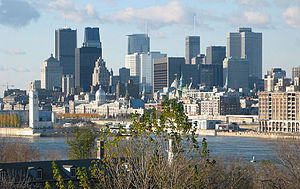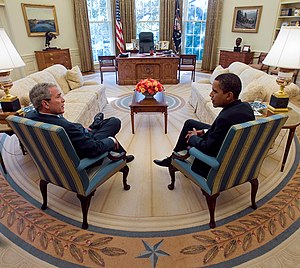 |
| English: View of downtown Montreal. Français : Vue du centre de Montréal. (Photo credit: Wikipedia) |
I moved last September from a
medium-sized (not to say smallish) city, Ottawa, to Montreal, a large city. I
am not quite sure why I made the move, but it was stimulated by a visit from my
son who said he found the environment I was living in in Ottawa “rather boring”
and suggested I might be happier in the livelier atmosphere of Montreal where I
had lived from 1957 until 1975 with some years off in the middle when I was
stationed in London, England.
I had told myself over the
years I had more friends in Montreal than in Ottawa, although experience should
have taught me that that was an unreliable guide to where I should live, since,
in modern urban life, friends tend to disappear into the woodwork, as it were,
to reappear only every few months. If
you have say four close personal friends, how often does that translate into
actual visits, or contacts? If one saw each of them, let’s say on an average
every four months, that would make 12 visits a year. Twelve out of 365 days
leaves 353 days in a year to be filled with other pursuits than sitting around
with one’s friends, grousing about life. So the proximity of friends can hardly
be put forth as a major determinant of my decision to move back to Montreal.
I remember many years ago when
major decisions were being taken about where Montreal’s second airport should
be located, a skilled urban planner told me that Montreal was still an
international city because it was the first place of call for visitors, but it
would cease to be an international city if the airlines decided not to arrive
first in Montreal. Therefore, he said, the choice of location for the new airport,
at that time under discussion, would turn out to be a matter of great
importance to the future of the city.
The place chosen was north of
Montreal, on the edge of the northern hinterland, which, after one has
travelled 10 miles or so out of Montreal is but sparely filled by industry and
people, except for isolated towns usually based on some mining operation or
other. The choice of Mirabel was a
matter of nationalism, rather than commonsense. The commonsense place for the
new airport would have been in the south-eastern corner of the province, closer
to the US, and to Ottawa, and within striking distance of cities such as
Kingston, Syracuse and all the cities around the eastern Great
Lakes like Buffalo and Rochester.
Mirabel airport, as is now
well-known, was a white elephant from the start, isolated in its magnificent
northernness, deep on the edge of the Montreal hinterland, and it was so
because the airlines preferred that in future their main stopping off point
would be Toronto, located in the heartland of the north-east. For the first few
decades, Mirabel was used by chartered airlines, taking off and landing from
visits to, usually, holiday places. I came over a few times from Ottawa myself
to take flights to the Caribbean or Mexico, and it was, to be sure, an awkward
place to get to, requiring departures at odd and difficult hours, a lack of
convenient bus connections, and the need to spend, very often, an additional
night in a hotel near the airport so as to be sure of catching an early-morning
flight. In general, a real pain-in-the-ass.
So, for geographical and
nationalistic reasons, Montreal gradually declined from its international
significance into a regional city --- admittedly, an important regional city
---- but nevertheless a city whose links to the outside world were more or less
peripheral when one was considering the bigger picture of international
movements. Even the use of Mirabel for
chartered flights eventually withered, and now, I believe, it is used only for
cargo.
Well, okay, there are always
the traditional reasons for liking a big city, that is, the vitality of the
life being lived here, the availability of concerts, lectures, films,
newspapers, journals of opinion, the sheer zip and energy of the place. I find that
is still true: Montreal has dozens of wonderful eating places, bars, places of
entertainment. It has put itself out in recent decades to attract people to
festivals and major shows of art and performance. But to tell the truth, in
one’s ninth decade, one has less energy than one had in one’s thirties and
forties to partake of all these attractions.
It may be just me, but
although I am enjoying the ambience of Montreal, which has long been one of my
favourite cities, when one examines its qualities one by one, one is forced back
on to the conclusion that, wherever one goes, it is always oneself who turns up
to spoil the fun. Even Ottawa has a
multiplicity of museums, shows, and such, but I seldom found myself patronizing
them. Similarly, although there are concerts, lectures and the like available
every night in Montreal, I find my education can be just as adequately served
by sitting at home watching the many wonderful things that are piped into one’s
living room in these electronic days.
Great documentaries arrive from around the world, beautiful movies, inspiring
events, available as they are happening, gripping sporting occasions, beautiful
matches equal to almost anything one might pick up by going out and hanging
around the streets, fighting to get an expensive ticket for some concert or
other.
Given all that, I have to
confess I still enjoy the sheer buzz of life that arises from a really big
city, the expectation that one is as likely to run into a student demo as to
come across some street theatre or charming bar or restaurant.
You make your choices in
life, not always rationally, and you have to make the most of what those
choices set in your path through life. And that’s what I am doing, feeling
fortunate to be living my declining years in an atmosphere that is, however
difficult it may be to explain why, stimulating and never less than
interesting.









